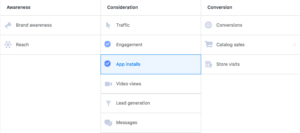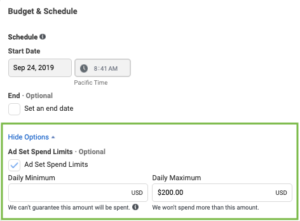Introduction:
Because the world is busy so people are flocking to their social media for daily relief. Daily 4.48 billion people log into their favourite social apps. Notably, social platforms are also entering the workplace. In fact, 4/10 of all Internet users worldwide use social media for work. Our life is filled with the social media advertising ecosystem, and right for the taking.
Social media has become an integral part of our daily lives, and businesses have recognized the potential it holds in reaching their target audience. While organic social media posts can help you connect with your followers, social media advertising takes things up a notch by allowing you to reach a larger audience and achieve specific marketing objectives. In this comprehensive guide, we’ll walk you through the basics of social media advertising and provide tips and best practices to help you create effective ads that resonate with your target audience.
Why Use Social Media Advertising?
Social media advertising offers a variety of benefits that can help businesses of all sizes reach their target audience and achieve their marketing goals. Even in pandemic situation how much social media was used this article show you Social Media in the Time of Social Distancing.
Here are some of the top reasons to consider social media advertising:
Reach a larger audience:
Social media advertising allows you to reach a larger audience than organic social media posts.
Target-specific demographics:
With social media advertising, you can target specific demographics, interests, behaviours, and locations to reach the right people.
Increase brand awareness:
Social media advertising can help increase brand awareness by exposing your brand to a wider audience.
Drive traffic and sales:
By creating targeted social media ads, you can drive traffic to your website and increase sales.
Measure your results:
Social media advertising platforms provide detailed analytics that allows you to track your results and optimize your campaigns.
Types of Social Media Ads

There are several types of social media ads available on various platforms. Here are some of the most common types:
Facebook Ads: Facebook Ads are versatile and can be used for a variety of objectives, including increasing brand awareness, driving traffic to your website, and generating leads or sales.
Instagram Ads: Instagram Ads can help you reach a younger audience and are particularly effective for businesses in the fashion, beauty, and food industries.
Twitter Ads: Twitter Ads are ideal for businesses looking to increase brand awareness or drive traffic to their website.
LinkedIn Ads: LinkedIn Ads are perfect for B2B businesses looking to reach professionals in their industry.
Pinterest Ads: Pinterest Ads are great for businesses in the home decor, fashion, and food industries.
Snapchat Ads: Snapchat Ads are perfect for businesses targeting a younger audience
How to Get Started with Social Media Advertising?
When it comes to social media advertising, having a clear understanding of your goals and budget is essential for achieving success. The first step in setting your social media advertising goals is to identify what you want to achieve. Are you looking to increase brand awareness, drive website traffic, generate leads, or boost sales? Each of these goals requires a different approach and may require a different budget.
For example, if you’re looking to run a social campaign on Facebook with the Facebook Ad Campaign tool, start by setting a budget. Then, Facebook will run your campaign for you and spend your budget as evenly as possible throughout your selected time period. You can then leave your Facebook ad campaign as is or add more money to your budget to continue.


When setting your budget, it’s important to consider the cost of each individual ad or campaign, as well as the cost of testing and optimizing your campaigns. It’s also important to consider the competitive landscape and the costs associated with targeting your desired audience.
Choose the Right Platform for your social media advertisement.
Facebook: With over 2.8 billion monthly active users, Facebook is one of the largest social media platforms in the world. It’s an ideal platform for businesses targeting a broad audience, as users of all ages and backgrounds are active on Facebook. The platform’s ad formats include image ads, video ads, carousel ads, and more.
Instagram: Instagram has over 1 billion monthly active users, with a majority of its users being under the age of 35. It’s a highly visual platform, making it an ideal choice for businesses with visually appealing products or services. Instagram offers a variety of ad formats, including image ads, video ads, carousel ads, and Instagram Stories ads.
Twitter: Twitter has over 330 million monthly active users, with a majority of its users being between the ages of 25 and 49. It’s a platform that’s ideal for businesses with a strong brand voice and a focus on customer engagement. Twitter’s ad formats include promoted tweets, promoted accounts, and promoted trends.
LinkedIn: LinkedIn has over 740 million members, with a majority of its users being professionals and business-oriented individuals. the ages 30-49 use the platform.
It’s a platform that’s ideal for B2B businesses or those targeting a professional audience. LinkedIn’s ad formats include sponsored content, sponsored InMail, and display ads.
Snapchat: Snapchat has over 1 billion monthly active users, with a majority of its users being under the age of 30. It’s a highly engaging and interactive platform, making it an ideal choice for businesses with a focus on entertainment or those targeting a younger audience.
Create Compelling Ad Copy and Design
Crafting compelling ad copy and design is essential in the world of digital advertising. With the increasing competition on social media platforms, businesses need to create unique and engaging ad content that captures the attention of potential customers.
Eye-catching visuals, such as high-quality images, videos, and infographics, can grab the audience’s attention and keep them engaged. Use contrasting colours and fonts to make your ad stand out from the competition. Make sure your design is mobile-friendly and optimized for all devices
The ad copy should be clear, and short & sweet and convey the product or service’s value proposition. A compelling headline and a call-to-action (CTA) are crucial to driving conversions. The CTA should be concise, and direct, and create a sense of urgency.
A/B testing can be useful in determining which ad copy and design resonates best with the target audience. By testing various ad designs and copy, businesses can optimize their ad performance and maximize their return on investment.
Track and Measuring Campaign Performance
Tracking and measuring campaign performance is essential for any successful advertising campaign. Without tracking, you cannot evaluate the effectiveness of your campaign or identify areas for improvement.
other social media advertising platforms. These tools allow you to track metrics such as impressions, clicks, conversions, and cost per conversion.There are several tools available to track social media metrics and measure campaign performance, including Google Analytics, Facebook Ads Manager, and Google Ads.
Click-through rate (CTR):
This measures the number of clicks your ad receives divided by the number of impressions. A high CTR indicates that your ad is resonating with your target audience.
Conversion rate:
That tracks the percentage of users who take a desired action after clicking on your ads, such as making a purchase or filling out a form. This metric can help you understand how well your ads are driving actual business results.
Cost Per Conversion (CPC):
Which tells you how much you’re spending to acquire each new customer. This metric can be used to compare the effectiveness of different campaigns and to identify areas where you can reduce costs.
FAQs:
What is the difference between organic and paid social media advertising?
Organic social media advertising refers to the use of social media platforms to promote products or services without paying for ads. Paid social media advertising involves creating and placing ads on social media platforms to reach out to a larger audience.
How do I measure the success of my social media advertising campaign?
You can measure the success of your social media advertising campaign by analyzing data such as the number of clicks, impressions, and conversions. You can also use tools such as Google Analytics to track the performance of your ads.
Which social media platform is best for my business?
The best social media platform for your business depends on your target audience. It is important to choose a platform that has a large user base that matches your target audience.
Conclusion:
Social media advertising is an effective way for businesses to reach out to a large audience and promote their products or services. By defining your target audience, setting clear goals, and creating compelling ads, you can create an effective social media advertising campaign. With the benefits of wide reach, targeted advertising, and cost-effectiveness, social media advertising is a must-have in any business’s marketing strategy.



